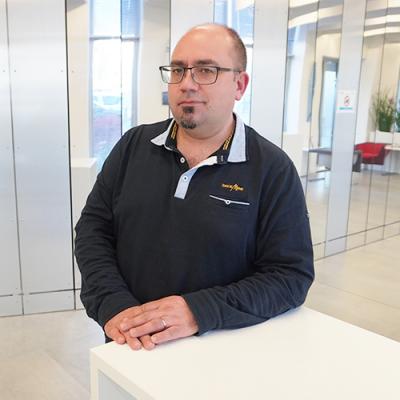For the development and maintenance of its production sites in France, TDF must plan more than 100,000 interventions each year. Here, operational excellence is a major challenge. The challenge is to optimise planning, to maximise on-site production time, and reduce the impact of inter-site travel. It is in this context that Alice Feneyrols, Head of Operational Performance at TDF, and Pierre Castel, AI-specialised Research engineer, worked together on one of the research projects linking the manufacturer and the IRT.
Pierre, what were the needs of the industrial company TDF when the collaboration began?
TDF wanted an optimisation tool to improve the planning of its teams' interventions at its various geographical sites. It had to be multifactorial, taking into account the skills of technicians, time spent on the road, and the pooling of operations. The ultimate goal was to reduce costs and decarbonise service rounds. Another objective was to make it easier for planners to schedule tasks.
What technical obstacles did you encounter in creating this industrial optimisation tool?
One of the first challenges was to formalise the entire thought process followed by a planner, from receiving a request to proposing a schedule tailored to the team concerned.
For certain jobs, specific skills are essential, and sometimes two technicians with complementary skills need to be present at the same time. In addition, to maintain their level of expertise, they must practice regularly. It was therefore necessary, using artificial intelligence, to design a customised engine capable of putting together teams tailored to each situation.
This AI engine also had to take into account the variability of technicians' availability to identify slots compatible with the duration of interventions, travel times, and regulatory breaks. This complexity led us to explore new algorithms, particularly those based on Transformer networks*, which are particularly effective in meeting these multiple constraints.
*A Transformer network is a type of artificial intelligence model designed to process and understand data organised in sequences. Its distinctive feature is that it uses an attention mechanism that allows it to identify the most essential parts to consider in a sequence.

In the most complex cases, the time required for allocation of an intervention round reduces from 1.5 hours to less than 10 minutes.
What were the results?
This is an example of AI being used to optimise industrial processes, particularly in logistics.
Our research led to the creation of a detailed functional flowchart, which TDF used to formalise its entire intervention planning process. This modeling facilitated an understanding of the operational steps, highlighted critical decision points, and identified levers for optimizing the existing process.
Data analysis and exploitation revealed a high degree of structural complexity, with cross-dependencies between business parameters (skills, availability, geolocation, technical constraints, etc.).
Based on these analysis elements, we develop an intelligent recommendation engine. Using artificial intelligence techniques, particularly reinforcement learning approaches, this engine is capable of proposing optimized squad assignments and appropriate intervention slots in real-time, taking into account all business and operational constraints.
The engine, created through the combined expertise of b<>com, TDF, and all the project partners, optimises the time spent programming end-to-end planning. In the most complex cases, the time required for allocation reduces from 1.5 hours to less than 10 minutes.
The active involvement of the TDF teams, notably through the provision of Alice throughout the project, enabled the requirements to be specified in detail, ensuring compliance in the field.

Working with IRT has reinforced my belief that innovation arises from the convergence of manufacturers' operational needs and the research capabilities of technology institutes.
Alice, how did you find your secondment to b<>com for this project?
This experience, which was new to me, was stimulating and enriching. It was an opportunity to step outside my usual activities and reflect on issues of operational excellence, with a view to increasing the efficiency of our field operations. This involved identifying and modelling current processes and considering technical solutions.
It was an opportunity to immerse myself in a cutting-edge technological innovation environment, collaborating with experts from diverse but highly complementary backgrounds: mathematical modelling, AI algorithms, monitoring and analysis of scientific publications, and testing and validation methodologies to aid decision-making. All of this created a dynamic working environment that was both agile and rich.
What have you learned from this experience of collaborating with IRT?
Working with IRT has reinforced my belief that innovation arises from the convergence of manufacturers' operational needs and the research capabilities of technology institutes. The worlds of research and operations are sometimes quite distinct and have their own constraints, so the two sides must reach a reasonable agreement to enable effective co-construction. Once this stage was complete, I really appreciated the motivation and dynamism of the teams involved. The project we carried out together is a fine example of what we can achieve when an initiative is driven by conviction and supported by a committed team.
For TDF, it was an opportunity to work with this project organisation over a shorter period than usual (one year) with sustained delivery milestones. At b<>com, we appreciated the professionalism and technical environment provided.



